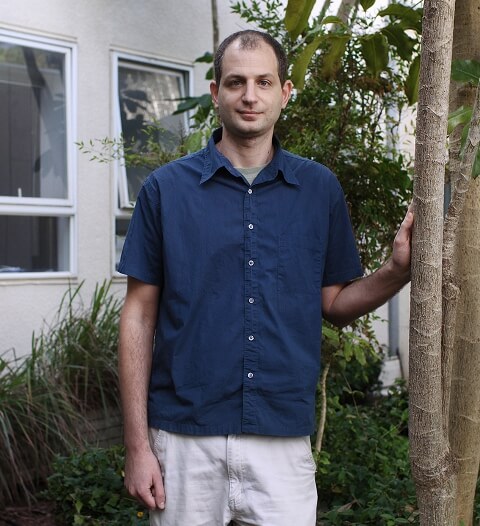What are the mechanisms that lead to the emergence of the phenomenon of superconductivity, and in particular at high temperature?

Superconductivity is expressed in the absolute absence of resistance to the passage of an electric current in a material. In this way, it is possible, at least theoretically, to transfer electrical energy over a long distance without losing energy, to develop electrical installations that do not heat up, and more. The fact that superconductors repel magnetic fields makes it possible, for example, to reduce friction between train tracks and train wheels, thus saving fuel, and moving the train at enormous speed. In fact, superconductors (as stated by Larry Niven) may remove barriers and forever change the face of technological reality.
The main difficulty in developing applications of superconductivity stems from the fact that this phenomenon takes place at very low temperatures. The first superconductor was discovered at a temperature of four degrees Kelvin (minus 269 degrees Celsius). A significant glimmer of hope in this field came, when in the 80s ceramic superconductors were discovered, which operate at a (relatively) high temperature: minus 181 degrees Celsius, and then even minus 137 degrees Celsius "only".
The progress of research in this field has slowed down significantly, because no one still understands the reasons and mechanisms that lead to the appearance of the phenomenon of superconductivity at relatively high temperatures. A common theory attributes the phenomenon to the appearance of special particles called "Cooper pairs", which consist of pairs of electrons which together form a kind of one particle, which functions as a force-carrying particle (boson). Bosons (as opposed to individual electrons, which are fermions - particles of matter), can undergo a certain type of condensation. It is this condensation that creates the phenomenon of superconductivity.
Here the question arises: how do two electrons, which carry negative electric charges, and therefore repel each other, manage to adhere to such an extent that they together form a body that functions as one particle? Here you have to remember that these are electrons moving in a metallic conductor. Each individual electron is attracted to the positive metal ions of the conductor. This attraction forces two electrons attached to it to stick together.
But this explanation fits the formation of a superconductor at low temperature. How, then, are superconductors formed at high temperature? It turns out that the transition of a conductive material to a superconducting state takes place near the "region" where the material undergoes a ("phase transition") to an antiferromagnetic phenomenon, where the spins of the particles are arranged in a sort of complex spatial structure, where the sum of the spins, on average, is zero.
Relatively small changes in temperature or pressure of a high-temperature superconductor can transform the material from a superconductor to an antiferromagnet. The proximity between the two phenomena implies that there is a certain connection between the phenomenon of superconductivity and the phenomenon of antiferromagnetism. But the deep nature of this connection is still a mystery.
One of the significant open questions in this field is: How does the pattern of the electron spins appear that allows the formation of "Cooper pairs" in an antiferromagnetic material? Attempts to understand the phenomenon encounter a problem known as the "sign problem", which appears in a large number of problems in quantum mechanics. The probability of physical processes (such as the movement of a particle between two certain points in space) is given through a scheme of all the routes in which this process can be carried out, when a complex number is attached to each process. In problems involving very many particles, such as the movement of electrons in a metal, the number of possible paths for each process is enormous. There are mathematical methods that make it possible to estimate such amounts by drawing a small number of "representative" routes, the sum of which makes it possible to estimate the entire amount. This method is called the "Monte Carlo method", named after the city where there are many gambling houses. However, when the sum includes positive and negative numbers that add up to a number close to zero, the Monte Carlo method fails, because any small error in estimating the sum causes a large error - in the positive or negative sign - in the final result (which is close to zero anyway).
Dr. Erez Berg, from the Department of Condensed Matter Physics at the Weizmann Institute of Science, developed a model that makes it possible to find a solution for the special case of a metal transitioning to an antiferromagnetic state (near which the transition to a superconducting state also occurs). The model successfully deals with the "sign problem" by ensuring that all terms of the sum over the particle trajectories are positive. Thus the problem of summing a very large amount of positive numbers without the "sign problem" remains. The scientists use the "Monte Carlo method" on this amount of numbers, and thus arrive at the desired conclusion.
Computer experiments performed using this model produced results that correspond to various known physical phenomena. In the future, Dr. Berg hopes to plan laboratory experiments that will test the model in reality.
personal
Erez Berg was born in Haifa. As a child, he participated in the International Physics Olympiad, and returned from it with a silver medal. After military service, he studied in the Technion's honors program, wrote a doctorate at Stanford University, and did post-doctoral research at Harvard University. In 2011 he joined the faculty of the Condensed Matter Physics Department at the Weizmann Institute of Science. He is married to Bar, a doctoral student in computer science at Bar-Ilan University. In his free hours you will find him, among other things, in the gym and in the "Chen" cinema.

2 תגובות
I wish they would already find a way to cancel our opposition to each other
In my humble opinion, the whole thing has to do with the interweaving phenomenon